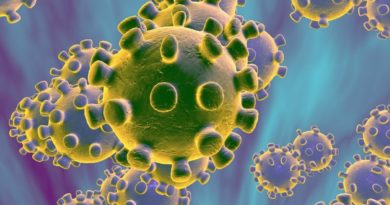Climate change will shift the oceans’ colors | SARAH GIBBENS
BY 2100, THE ocean as we know it is likely to change color.
That was the conclusion of a study published Monday in the journal Nature Communications that modeled how phytoplankton will change as oceans continue to warm. Under a “business-as-usual” scenario in which greenhouse gas emissions continue unabated, the bluest subtropical zones of the ocean will become bluer, and greener regions along the equator and poles will become greener.
More than just an oddity, the changing color is a warning sign, say the study authors, of drastic global changes that will take place in a world warmed by climate change.
Measuring color
It’s well known that seasonal changes regularly change water color, but warming oceans could be permanently altering the mosaics of blues and greens seen from space. (Read about the giant lake that changed from green to red.)
Sunlight penetrates over 600 feet below the surface of the ocean. Everything deeper is enshrined in darkness. Above that, most water molecules are capable of absorbing all colors except blue, which is why blue is reflected out.
Organic matter that blankets the surface of the ocean, like phytoplankton, changes this color. Much of it contains chlorophyll, a green pigment that absorbs the sunlight plants need to make food. As the ocean warms, currents become more irregular, and the layers in the water become more stratified, meaning warm regions don’t mix as easily with cold regions. There are thousands of phytoplankton species, uniquely adapted to warm or cold water. As oceans continue warming, some species may die off, some will thrive, and others will migrate to different regions.
But just looking at chlorophyll alone, however, won’t tell scientists how a warming climate is altering phytoplankton. Naturally occurring events like El Niños and La Niñas can influence how much phytoplankton is concentrated in a given area.
The research group instead used satellites to measure reflected light as a whole.
Their conclusion: half the world’s oceans will have bluer blues and greener greens by 2100.
A business-as-usual scenario
“What was special about the model is it suggests the subtle shifts in color are an early warning sign,” says Dutkiewicz. “Phytoplankton are the base of the marine food web. Everything in the ocean requires phytoplankton to exist. The impact will be felt all the way up the food chain.”
Their projections were based on the likelihood that the world will warm three degrees Celsius by 2100. Last November, the U.N. Meteorological Organization estimated that the Earth will warm anywhere between three and five degrees by the end of this century.
Dutkiewicz says her model is based on a “much warmer world.” If significant changes are implemented, the ocean’s color might remain the same.
That would require significant cutbacks to greenhouse gas emissions created by burning fossil fuels.
This article was originally published nationalgeographic.com




